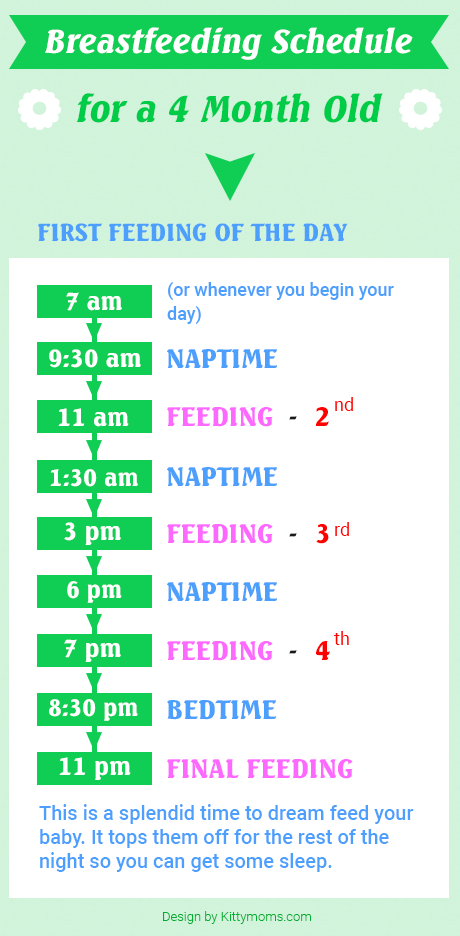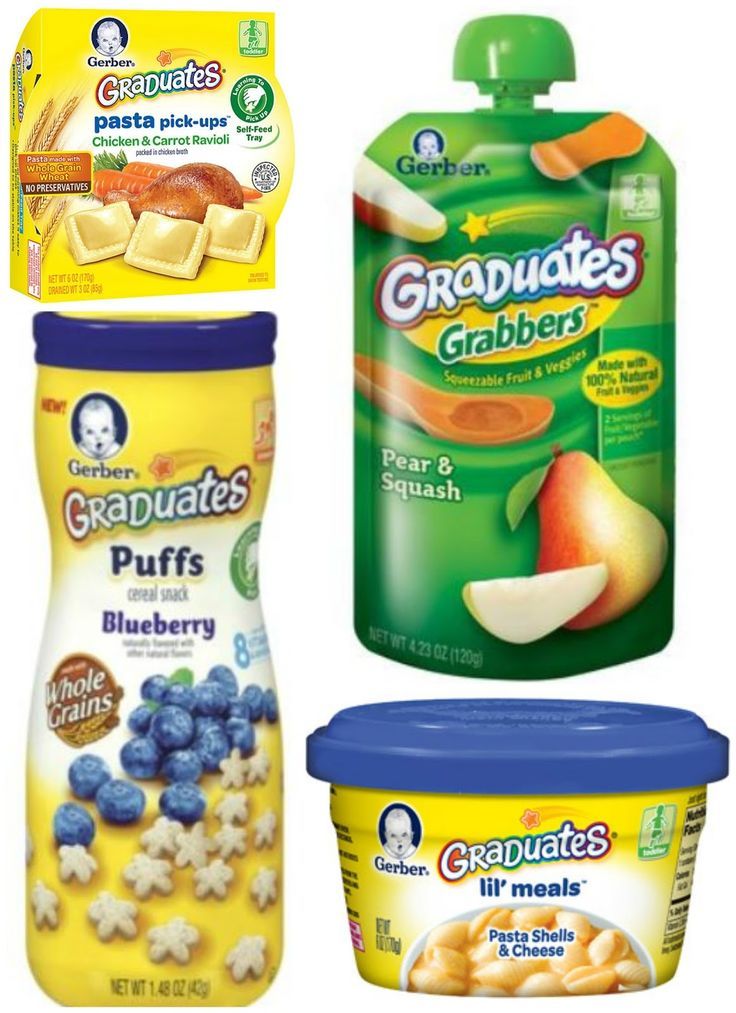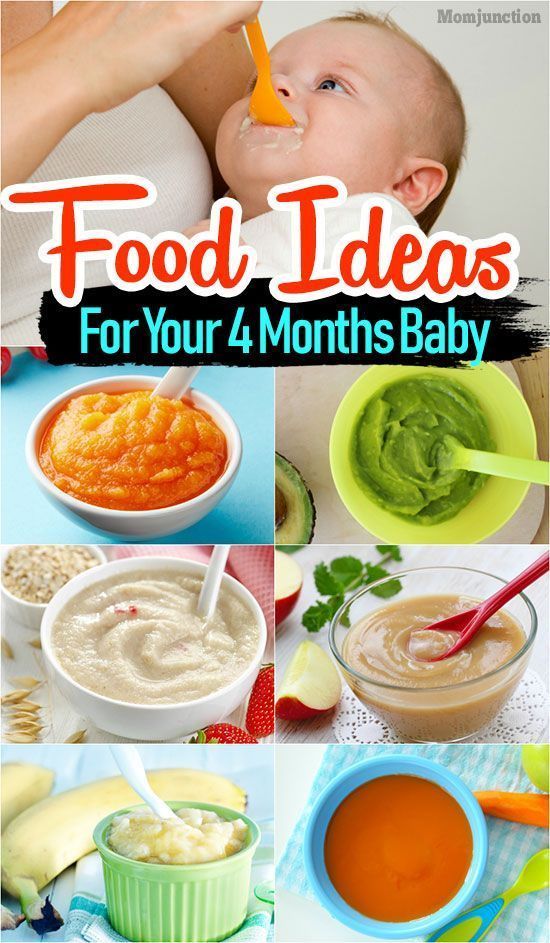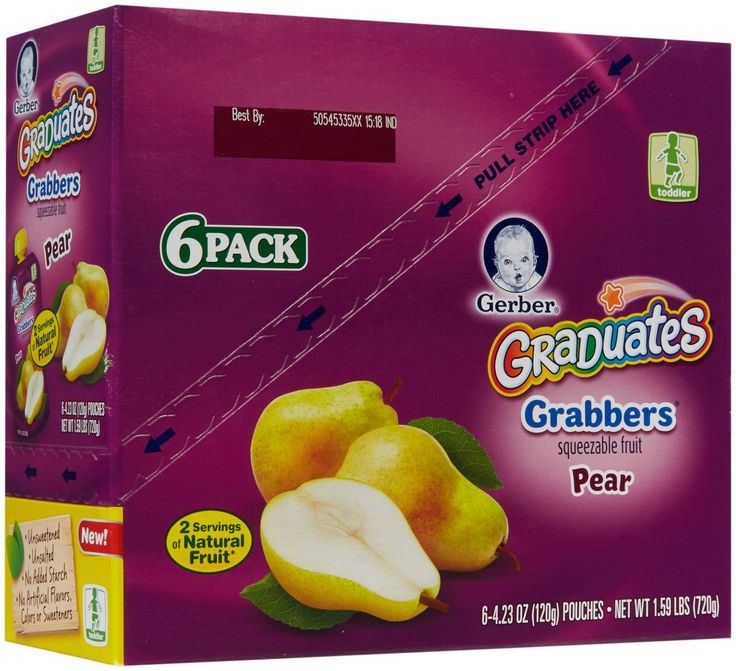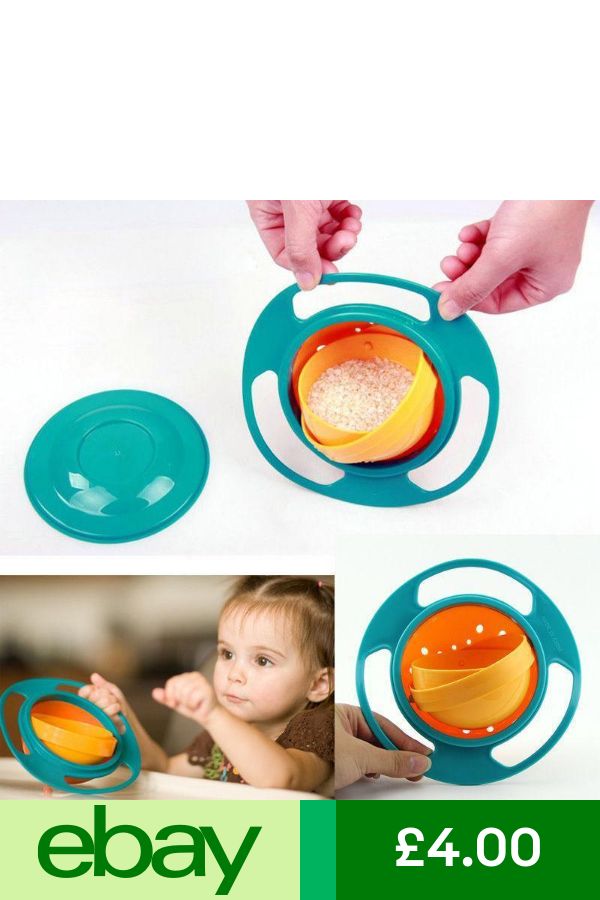2 month old baby feed schedule
How Often and How Much Should Your Baby Eat?
By: Sanjeev Jain, MD, FAAP
One of the most common questions new parents have is how often their baby should eat. The best answer is surprisingly simple: in general, babies should be fed whenever they seem hungry.
How do I know when my baby is hungry?
For babies born
prematurely or with certain medical conditions, scheduled feedings advised by your pediatrician are best. But for most healthy, full-term infants, parents can look to their baby rather than the clock for hunger cues. This is called feeding on demand, or
responsive feeding.
Hunger cues
A hungry baby often will cry. But it's best to watch for hunger cues before the baby starts crying, which is a late sign of hunger and can make it hard for them to settle down and eat.
Some other typical hunger cues in babies:
Licking lips
Sticking tongue out
Rooting (moving jaw and mouth or head in search of breast)
Putting his/her hand to mouth repeatedly
Opening her mouth
Fussiness
Sucking on everything around
It is important to realize, however, that every time your baby cries or sucks it is not necessarily because he or she is hungry. Babies suck not only for hunger, but also for comfort; it can be hard at first for parents to tell the difference. Sometimes, your baby just needs to be cuddled or changed.
General guidelines for baby feeding
It is important to remember all babies are different―some like to snack more often, and others drink more at one time and go longer between feedings. However, most babies will drink more and go longer between feedings as they get bigger and their tummies can hold more milk:
Most newborns eat every 2 to 3 hours, or 8 to 12 times every 24 hours. Babies might only take in half ounce per feeding for the first day or two of life, but after that will usually drink 1 to 2 ounces at each feeding. This amount increases to 2 to 3 ounces by 2 weeks of age.
At about 2 months of age, babies usually take 4 to 5 ounces per feeding every 3 to 4 hours.
At 4 months, babies usually take 4 to 6 ounces per feeding.

At 6 months, babies may be taking up to 8 ounces every 4 to 5 hours.
Most babies will increase the amount of formula they drink by an average of 1 ounce each month before leveling off at about 7 to 8 ounces per feeding. Solid foods should be started at about 6 months old.
Concerns about overfeeding or underfeeding your baby
Too full?
Babies are usually pretty good at eating the right amount, but they can sometimes take in more than they need. Infants who are bottle feeding may be more likely to overfeed, because drinking from a bottle may take less effort than breastfeeding.
Overfed babies can have stomach pains, gas, spit up or vomit and be at higher risk for obesity later in life. It's better to offer less, since you can always give more if your baby wants it. This also gives babies time to realize when they're full.
If you are concerned your baby wants to eat
all the time―even when he or she is full―talk with your pediatrician.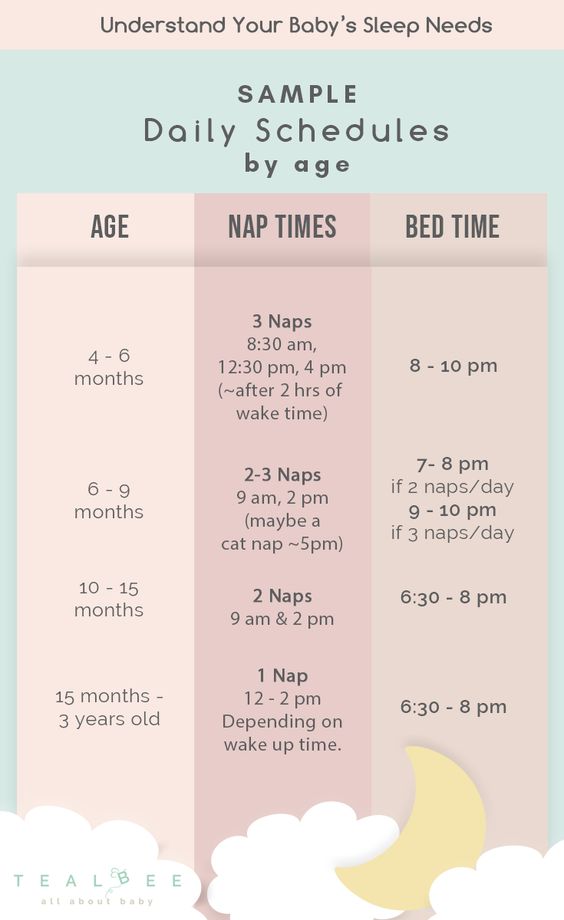 Pacifiers may be used after feeding to help sooth healthy-weight babies who like to suck for comfort, rather than nutrition. For babies who are breastfed, it's best to wait to offer pacifiers until around 3 to 4 weeks of age, when breastfeeding is well-established.
Pacifiers may be used after feeding to help sooth healthy-weight babies who like to suck for comfort, rather than nutrition. For babies who are breastfed, it's best to wait to offer pacifiers until around 3 to 4 weeks of age, when breastfeeding is well-established.
Trouble gaining weight?
Most babies will double their birth weight by 5 months of age and triple their birth weight by their first birthday. If your baby is having trouble gaining weight, don't wait too long between feeding―even if it means waking your baby. Be sure to talk with your pediatrician about how often and how much to feed your baby.
How do I know if my baby is getting enough to eat?
Daily diapers
A newborn's
diaper is a good indicator of whether he or she is getting enough to eat. In the first few days after birth, a baby should have 2 to 3 wet diapers each day. After the first 4 to 5 days, a baby should have at least 5 to 6 wet diapers a day. Stool frequency is more variable and depends whether your baby is
breastfed or formula fed.
Growth charts
During regular health check-ups, your pediatrician will check your baby's weight and plot it on a growth chart. Your baby's progress on the growth chart is one way to tell whether or not they are getting enough food. Babies who stay in healthy growth percentile ranges are probably getting a healthy amount of food during feedings.
Remember
Talk with your pediatrician if you have any questions or concerns about your baby getting the right amount to eat.
More information:
- Making Sure Your Baby is Getting Enough Milk
- Amount and Schedule of Formula Feedings
- Is Your Baby Hungry or Full? Responsive Feeding Explained (Video)
- Remedies for Spitty Babies
- Ask the Pediatrician: With the baby formula shortage, what should I do if I can't find any?
- Ask the Pediatrician: How should we feed our baby if we're running low on money?
-
Airplane Choo Choo: A Feeding Guide for Children (National Dairy Council)
About Dr.
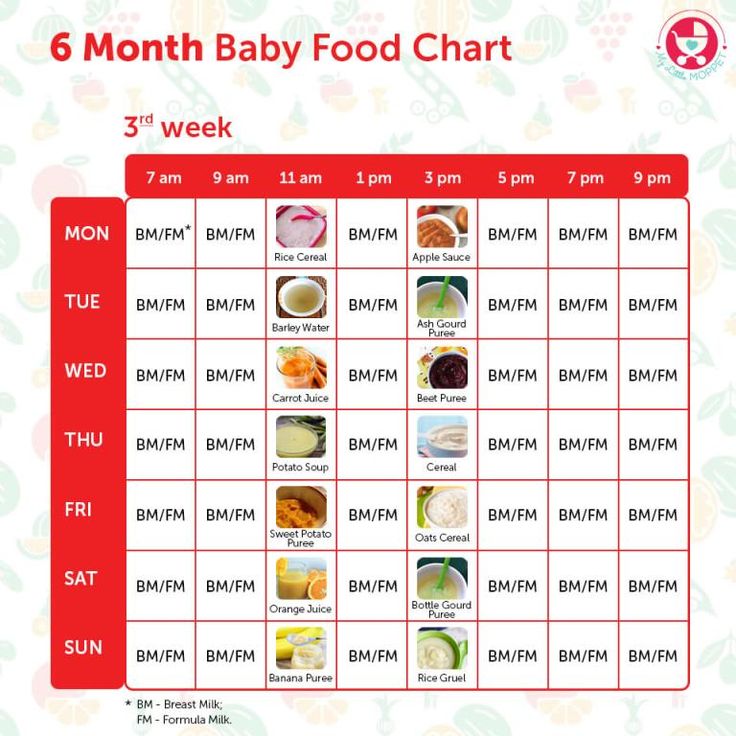 Jain:
Jain:
Sanjeev Jain, MD, FAAP, is a Clinical Associate Professor of General Pediatrics and Adolescent Medicine at the University of Wisconsin School of Medicine and Public Health. Within the American Academy of Pediatrics, he is a member of the Section on International Child Health and the Wisconsin State Chapter.
The information contained on this Web site should not be used as a substitute for the medical care and advice of your pediatrician. There may be variations in treatment that your pediatrician may recommend based on individual facts and circumstances.
2-Month-Old Baby: Milestones, Sleep & Feeding Schedule
Have you noticed that your tiny newborn isn't so tiny anymore? There are many exciting growth and developmental milestones to look forward to once your baby turns 2 months old, and we’re providing a preview of some of the ones you’ll definitely want to watch for. We’ll also cover how to deal with common health concerns like diaper rash and coughs.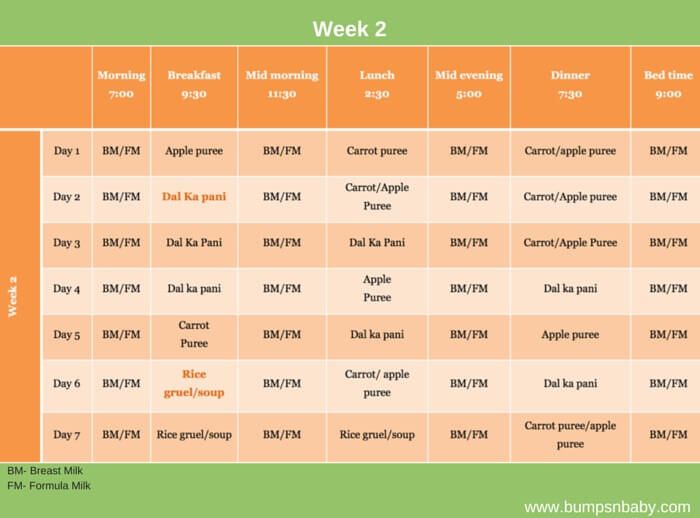 If you’re returning to work soon, take a look at the tips and insights we've included to help make this transition go smoothly for both you and your baby.
If you’re returning to work soon, take a look at the tips and insights we've included to help make this transition go smoothly for both you and your baby.
Baby Development Milestones for a 2-Month-Old
This month will be full of discovery for your baby as they become more and more aware of the world around them. Here are some of the baby development milestones your 2-month-old baby may be approaching.
Growth and Physical Development
During these early months, babies tend to grow about 1 to 1 1/2 inches in length and gain about 1 1/2 to 2 pounds in weight each month. Your baby’s healthcare provider will monitor your baby's growth rate at each checkup, noting your 2-month-old baby’s weight, length, and head circumference to make sure everything is on track. Read more about how baby growth charts are used in your baby's first 24 months.
And there's more news on growth: The soft spots on your baby's head, called the fontanelles, will begin to harden as the bones of your baby's head fuse together.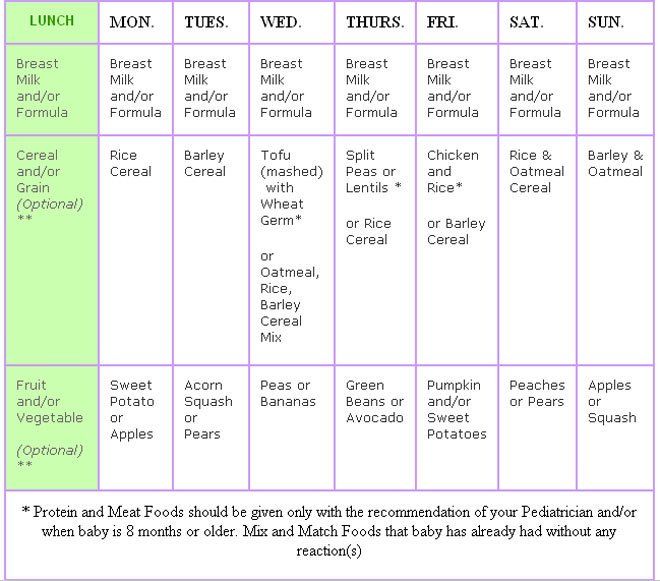
Watch Those Fingers and Toes
You may have noticed that your baby's nails seem to grow at the speed of light. You'll likely have to clip or file your baby's fingernails about once a week, and their toenails about twice a month. You may not have to worry about reminding yourself—you'll know it's time when you or your baby get scratched! Here are some tips on how to care for your baby's nails:
Use baby nail scissors or clippers, or a soft nail file
Clip your baby's nails while they’re asleep or after a relaxing bath, as their hands will be less of a moving target
Push down on the skin of the fingertip so you can safely clip just the nail, not the skin
File any rough edges after clipping the nails
If you're still unsure about how to safely cut your baby's nails, ask their healthcare provider to show you how.
Senses: Seeing the World in Color
What can babies see at 2 months old? A lot more than they could in the previous months! At 2 months old, your baby’s vision is improving. They will start to recognize objects and will love to look at familiar human faces, especially their parents’. In earlier weeks, your baby may have been drawn to simple patterns with straight lines, but soon they'll start to notice circular shapes and patterns such as bull's-eyes and spirals. Your little one is starting to see colors better, too.
They will start to recognize objects and will love to look at familiar human faces, especially their parents’. In earlier weeks, your baby may have been drawn to simple patterns with straight lines, but soon they'll start to notice circular shapes and patterns such as bull's-eyes and spirals. Your little one is starting to see colors better, too.
How far can a 2-month-old see? Not that far just yet, although your little one will enjoy gazing at things in the distance when you head outside. Help them learn by saying aloud the names of the different objects they see, naming anything that catches their eyes, like a tree, squirrel, or playground.
Movement: Baby Squats
Although many of your baby's movements are still reflexive, your little one will gradually learn to control more of what they do. For a while they may seem less active as some of their early reflexes fade, but new movements will start appearing that are more purposeful.
The kicks your baby may have started practicing last month will start to gather force, as you might discover if they accidentally kick you. In the coming weeks, they'll gain control of bending and straightening their knees. If you hold them upright with their feet on the ground, they might crouch down and then “stand”—and they'll soon realize they can bounce.
In the coming weeks, they'll gain control of bending and straightening their knees. If you hold them upright with their feet on the ground, they might crouch down and then “stand”—and they'll soon realize they can bounce.
Your baby's hand and finger skills are also developing. Your little one may be spending more and more time with their hands unclenched, and they'll likely be fascinated by their hands as they pass by in front of them. They'll slowly develop the ability to bring their hands to their mouth—initially it might happen by accident, but eventually they will place their hands in their mouth on purpose as sucking their knuckles will be soothing. If you put a rattle in their hand they might hold onto it and even shake it, but—watch out!—they'll drop it when they get bored.
All that tummy time they’ve been putting in (with you closely supervising) will slowly start to pay off. Around this month or next, your baby will be able to push up off their arms and briefly hold their chest and head up.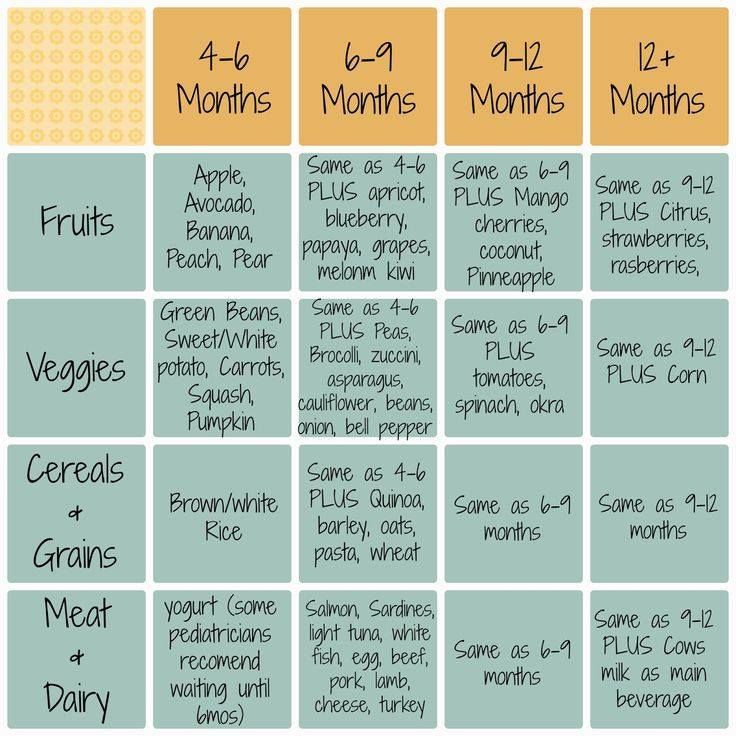 This is big news because it's a step toward greater independence for your little one. Gaining this skill will mean being able to look around at whatever interests them, even when they’re lying on their tummy.
This is big news because it's a step toward greater independence for your little one. Gaining this skill will mean being able to look around at whatever interests them, even when they’re lying on their tummy.
related baby tool
Keep an eye on your baby’s average growth by tracking height, weight, and head circumference with our simple tool.
Fill out your baby's details*:
What is your child*
Boy Girl
This is a mandatory field.
Age (between 0 and 24 months)
This is a mandatory field.
Weight (lbs.)
This is a mandatory field.
Height (in.)
This is a mandatory field.
Head circumference (in.)
This is a mandatory field.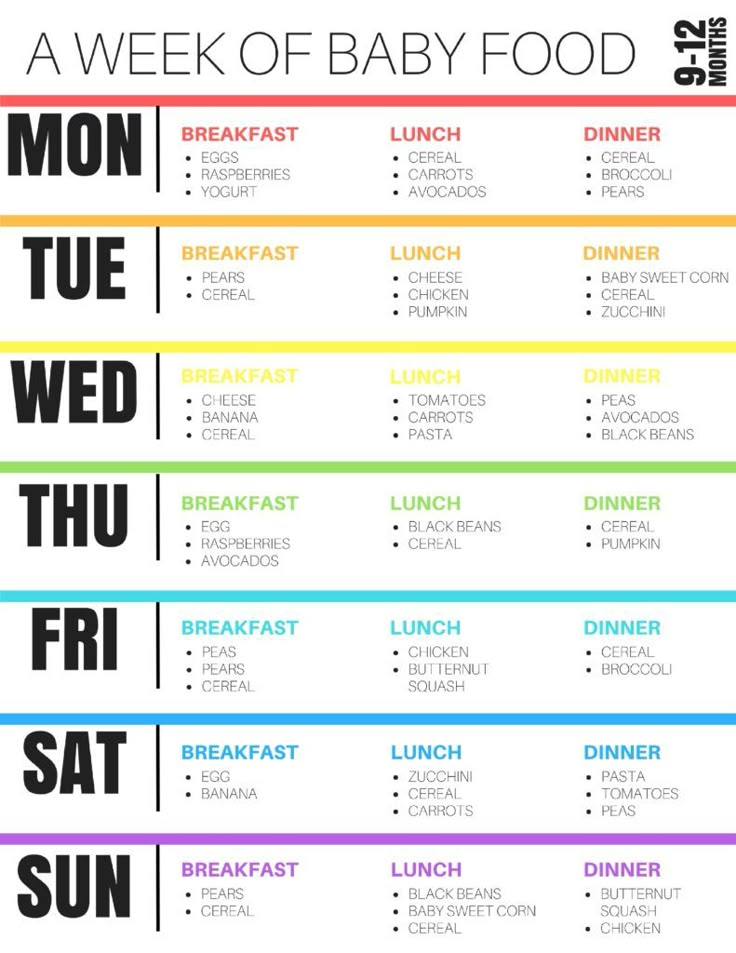
*Input details of your baby’s last measurements. **Source: World Health Organization
Personality: Muh-muh-muh-muh
Your baby's personality will reveal itself more and more each day. It will start to show in the way they communicate using facial expressions, vocalizations, and even gestures. For example, if you smile at them and they feel happy, they might smile right back at you. Around this time, they might start to happily amuse themselves by making all kinds of strange new sounds. You might hear “muh-muh” and “bah-bah,” and “aahs” and “oohs.” Have conversations with them repeating these sounds back to them.
“Baby talk” is important at this stage, but add in real words, too. All along, they will be learning that conversation is a two-way street where each person takes turns, and each contribution is important. As the weeks progress, your baby will be more alert to your tone of voice and will be able to get an idea of your mood by how you talk to them. Your voice also helps signal what's to come, so tell them what you're doing when you're changing their diaper, taking them out for a walk, or bathing them.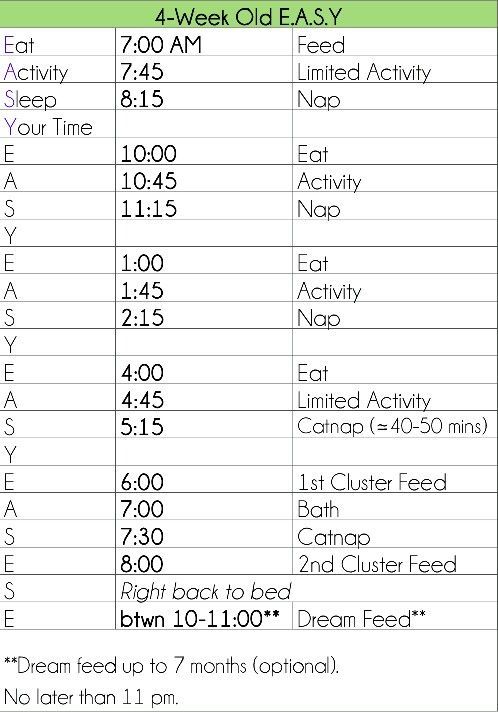
Soon your baby won't only be smiling: They'll be squealing or laughing in delight. But don't be surprised if your baby isn't as responsive to strangers. Parents and siblings will be your baby’s favorites, and probably other regular visitors. Just like adults, your little one has their preferences, too!
Activities for Supporting Your 2-Month-Old Baby’s Development
Playing and interacting with you will have a huge role in your baby's brain development and early learning. If you’re wondering what a 2-month-old “should” be doing or what to do with your baby all day, here are some activities you could do together:
Read to your baby. Even if they don't fully understand all the words, your baby is listening to the sounds you're making, and they’re learning about tone and pacing, for example. Don't hesitate to read the same book over and over—babies love repetition.
Have a conversation. Respond to your baby's coos and aahs, and initiate conversation by telling them what you're up to.
 When they “talk,” try not to interrupt or look away. Your attention tells them that their voice is important too and helps build trust.
When they “talk,” try not to interrupt or look away. Your attention tells them that their voice is important too and helps build trust.Continue tummy time. Give your baby short periods of tummy time each day to help strengthen their neck, arm, and shoulder muscles. Tummy time involves laying your baby on their tummy on a firm surface like the floor, making sure you're staying close to them and watching.
Introduce a variety of sounds. Play your baby music or give them toys that make different sounds when touched. Let them listen to the sounds of everyday life, too. For example, have them safely nearby as you do household chores.
Watch the short video below to learn more about the importance of “baby talk,” reading to your baby, and other language development tips.
Feeding Your 2-Month-Old Baby
Two-month-old babies need to be fed whenever they’re hungry, so your 2-month-old’s feeding schedule should be based on their hunger signs. Your baby will show you they’re ready to eat by making sucking motions, moving their hands to their mouth, whimpering, or flexing their arms and hands. And for a rough idea of how often a 2-month-old baby eats, that's usually about six to eight times a day.
Your baby will show you they’re ready to eat by making sucking motions, moving their hands to their mouth, whimpering, or flexing their arms and hands. And for a rough idea of how often a 2-month-old baby eats, that's usually about six to eight times a day.
It's best to focus on your baby’s signs of fullness to know when they’re done feeding rather than worrying about how much a 2-month-old “should” eat. Keep an eye out for the signs they’ve had enough, such as slowing down, stopping sucking, or turning away. You can probably tell your baby is generally eating well if they doze off after a feeding but seems alert, content, and active between feedings.
If you’re wondering how long “should” a 2-month-old sleep at night without eating, at this stage, babies often sleep longer at night and need feeding less often. So, your baby may be able to sleep for a longer stretch before a nighttime feeding. You might be able to skip one middle-of-the-night feeding; as your baby’s stomach capacity grows, they may not be hungry again until early morning.
Tracking Wet and Dirty Diapers
The number of diapers you change gives you clues about whether your baby is healthy and is getting enough to eat. Your baby may pee anywhere from once every couple of hours to only once every four to six hours.
If you’re asking yourself “How many wet diapers does a 2-month-old produce,” there is no exact number since every baby is different. However, fewer than six wet diapers may be a sign of mild dehydration. Pay attention to how many diapers your baby typically goes through. If there is a significant drop in the number of wet diapers or your baby’s mouth seems dry, they may be dehydrated. If you’re in any doubt, consult your baby’s healthcare provider.
There is no “correct” number when it comes to poopy diapers either. So, don’t focus on how much your 2-month-old “should” poop since the frequency can vary. Two-month-old babies can poop anywhere from several times a day to only once a week. If your baby is pooping less than normal but the stools are soft and your baby is otherwise healthy, there may not be any cause for concern. Still, if you’re worried, your baby’s healthcare provider will be able to check whether everything is OK.
Still, if you’re worried, your baby’s healthcare provider will be able to check whether everything is OK.
As you’ve no doubt realized, your baby’s going through plenty of diapers. If you haven’t already, don’t forget to download the Pampers Club app so you can get great rewards for all those diapers you’re buying.
How Much Sleep Does a 2-Month-Old Baby Need?
Are you asking yourself, “How many hours ‘should’ a 2-month-old baby sleep”? At 2 months old, your newborn baby may sleep about 14 to 17 hours over a 24-hour period. This is just a general range, and your 2-month-old baby’s sleep and nap schedule may be slightly different.
So, how long “should” a 2-month-old sleep at night or nap during the day? Your baby may spend more time alert and awake during the day, and although they may want fewer naps, these naps might be a little longer in duration. At this stage, some (but not all) babies even manage to sleep through the night, meaning about six to eight hours in one stretch.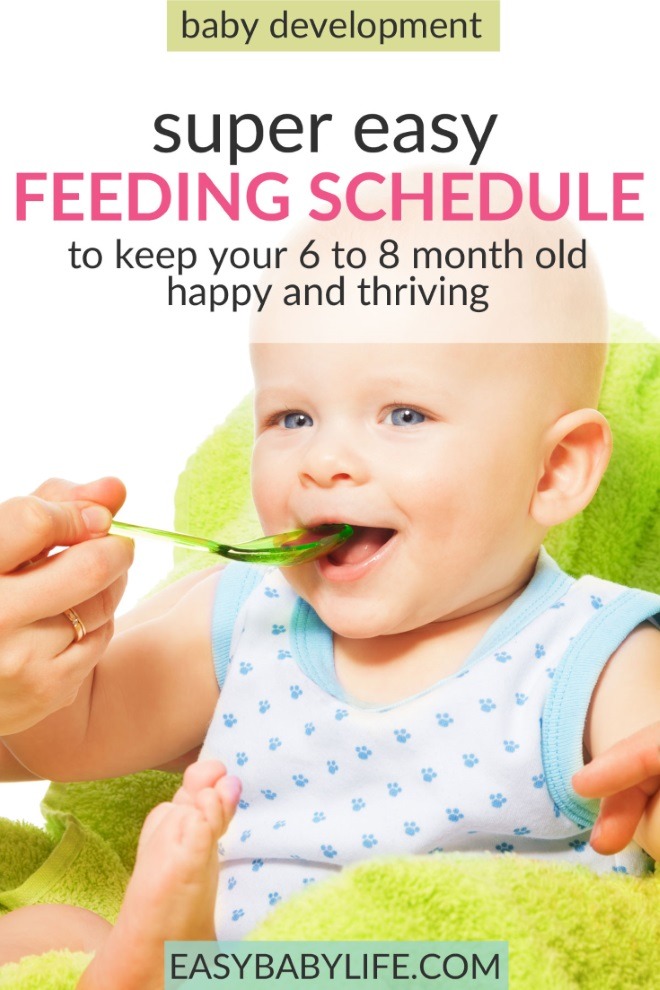
Good sleep routines—regular bedtimes and naptimes, and restful sleeping periods—give your 2-month-old a great start in life, contributing to their general health and well-being. Although it can take a while for evening routines to become established, you can help your baby head in the right direction by making nighttime feeds as quiet as possible. For example, keep the lighting low, don’t speak much or loudly, and after the feeding and a quick diaper change put them right back to sleep on their back to help prevent SIDS (sudden infant death syndrome).
Get Help Setting Up a Bedtime Routine
To help you establish a consistent bedtime routine, check out the Smart Sleep Coach by Pampers. Codeveloped with pediatric sleep experts and packed with articles that explain your baby’s development, the Smart Sleep Coach app includes a powerful sleep tracking tool that suggests the best times for your baby to nap and sleep. Plus, the Smart Sleep Coach’s exclusive algorithm customizes sleep-coaching approaches based on your input and your baby’s unique sleep patterns.
A Day in the Life of Your 2-Month-Old Baby
Your 2-month-old baby’s daily schedule may include simple routines for sleeping, feeding, bathing, and playing. Here’s one example of what a typical day might look like:
Your Baby’s Health
Some health issues you may encounter this month may include:
Diaper rash. A wet or soiled diaper that touches your baby’s skin for too long can cause a red rash on the diaper area. To combat diaper rash, change wet or poopy diapers as soon as possible, clean the area with wipes at each change, and expose your baby’s bottom to air whenever possible. These steps will help the rash clear up and help prevent it from reoccurring.
Heat rash. These tiny, red bumps typically occur in hot and humid weather, usually on the neck, arms, legs, or diaper area. Don’t apply skin ointments; instead, cool the area with water, then completely dry the skin, dress your baby in cool, dry clothing, and try to keep them out of the heat.
 With this kind of care, heat rash typically goes away after a few days.
With this kind of care, heat rash typically goes away after a few days.Eczema. If your baby has red, itchy, scaly patches of skin in the crooks of the elbows and knees, it could be eczema. Your baby’s healthcare provider can make a diagnosis and will recommend treatment options. It may help to use mild, unscented baby soaps on your baby and their clothes and sheets, and to dress them in soft clothes. If you’re asking yourself “How often should I bathe my 2-month-old baby”? Bathe them three times a week at the most.
Coughing. If you notice your 2-month-old baby coughing, it’s a sign that their airways are irritated. Coughs can be triggered by many kinds of respiratory illnesses, from the common cold to pneumonia. It’s a good idea to reach out to your baby’s healthcare provider if your little one is coughing; if coughing is accompanied by fever or a difficulty in breathing, take your baby to their healthcare provider right away for treatment or advice.

Development Tips for Your Baby This Month
Here are some tips that can help you bond with your 2-month-old baby and foster a feeling of safety and security, as well as contribute to their well-being and healthy intellectual development:
Provide warm and consistent physical contact. Hugging your baby often makes your baby feel safe and loved. Continued skin-to-skin contact is also important.
Read to your baby every day. Reading helps set the stage for language development in babies. Reading in the evening before bed is the perfect opportunity to also create a calming bedtime routine.
Narrate your day as you talk to your baby. Use simple-to-understand phrases to narrate your actions as you interact with your baby, such as during dressing, diaper changes, bathing, and feeding times. Respond to your baby’s faces and gestures because it’s in fact a conversation! If you or your partner speak a foreign language, start using it with your baby.

Show your baby colorful objects of different shapes, sizes, and textures. These can include sensory toys, rattles, or plush toys (be sure the toys are suitable for a 2-month-old baby). You may also like to show your baby picture books and family photo albums.
Get in tune to your baby’s mood. You know your baby best: their preferences and aversions. Read and respond to their cues, for example, such as when they're hungry or tired, happy or upset.
Items You Will Need This Month
You may already own some necessary baby gear like a crib, changing table, and stroller, but here are some additional items it may be worth purchasing if you haven’t already:
Baby books. Now’s the time to dig out your favorite children’s book from your own childhood or repurchase some of the classics as well as some of the latest titles.
Sound machine. If your baby needs help falling asleep, you might like to try using very soft music or white noise to help lull them to sleep.
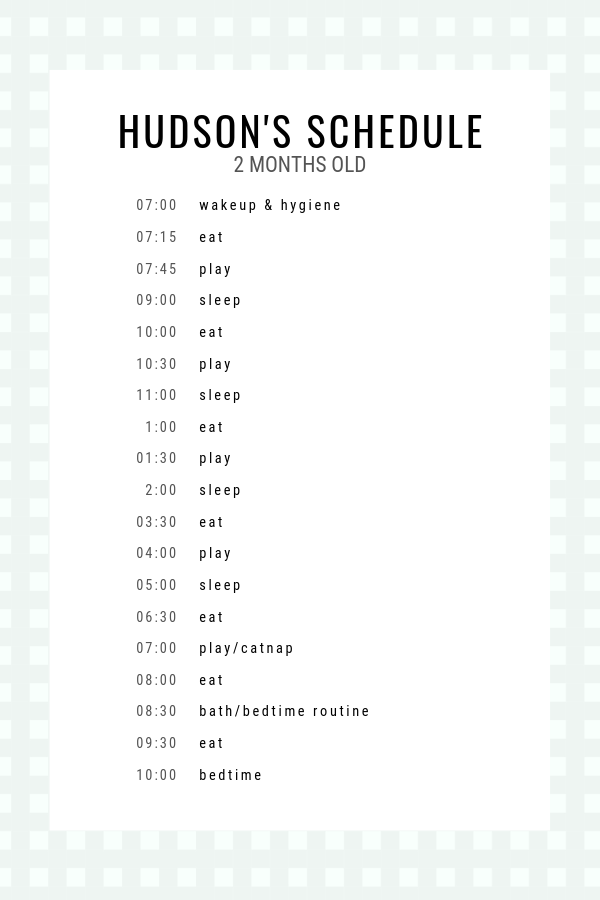
Diapers, wipes, and diaper rash cream. You’ll continue to use a lot of diapers in the coming months, so being well-stocked with diapering supplies is a good idea.
Baby nail clippers. You may be surprised how fast your baby’s fingernails grow. Baby nail clippers can make trimming them a breeze.
Humidifier. A comfortable sleeping temperature and humidity is very important for your baby, especially if they happen to have a cold.
Night-light. A night-light will make those late-night feedings and check-ins much easier, and you won’t wake up your baby by turning on an overhead light.
Baby thermometer. A thermometer specifically designed for babies is a must-have. Plus, make sure that your first-aid kit is up to date.
Your Life as a Parent: Returning to Work
Depending on your situation, different factors may come into play as you decide if and when to go back to work, including your finances, maternity leave options, and general family considerations. If you can, allow yourself some flexibility as you may change your mind about your return to work when the time comes. Whenever you do return to work, it’s natural to feel sad, anxious, or concerned about how your baby will adjust. If your partner is not staying home with your baby, the key is to find child care that you feel comfortable with and that your baby thrives under. You might also consider getting additional help at home so you can spend that precious home time with your baby without additional distractions.
If you can, allow yourself some flexibility as you may change your mind about your return to work when the time comes. Whenever you do return to work, it’s natural to feel sad, anxious, or concerned about how your baby will adjust. If your partner is not staying home with your baby, the key is to find child care that you feel comfortable with and that your baby thrives under. You might also consider getting additional help at home so you can spend that precious home time with your baby without additional distractions.
Organizing Child Care
You may have multiple sources and forms of child care that you could consider, including
your parents or other relatives
a babysitter
a day care center
in-home care, either solely for your baby or in a group with other children
a nanny
or a combination of the above.
As you search for child care, focus on ensuring that your baby will be happy and developing well under the care you select.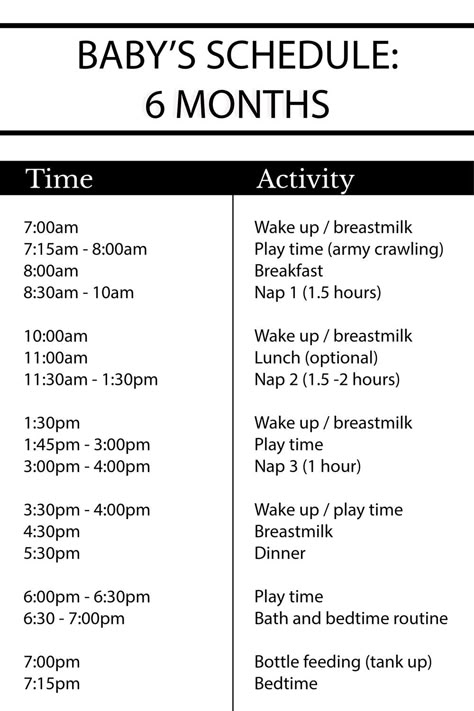 Ask other parents or your baby’s healthcare provider for referrals. Speak to potential caregivers at length, observe them with your baby for a day or two, check their references and do background checks, and trust your instincts. You should always keep a watchful eye that your baby is doing well and reevaluate your choice if needed.
Ask other parents or your baby’s healthcare provider for referrals. Speak to potential caregivers at length, observe them with your baby for a day or two, check their references and do background checks, and trust your instincts. You should always keep a watchful eye that your baby is doing well and reevaluate your choice if needed.
Expressing Breast Milk at Work
Returning to work can be stressful for some women and may reduce your breast milk supply (as may other sources of stress), particularly if you are not able to pump as much as you would like. By law, your employer must allow you time and a space—other than a bathroom—for you to express breast milk until your baby turns 1 year old. If you are concerned your milk supply may be running low, read up on how to increase breast milk supply and contact your healthcare provider or lactation consultant for help.
Finding Help at Home
As you return to work—or simply because you need an extra pair of helping hands—you may need help with cooking, household chores, or errands. Here are some things to keep in mind:
Here are some things to keep in mind:
Make sure you have someone you trust who will relieve the load, not add to it
Figure out when you’ll need help and make sure the helper can reliably commit to this schedule
Be clear about what you need help with and consider having it in writing
Ask for enough warning if the helper can’t make it or if they are sick
Have a plan B like a babysitter or neighbor you can call to jump in at the last minute
Consider getting a background check and checking for a valid driver’s license
If the person’s role includes caring for your baby, ask the caregiver to complete a baby first-aid course.
Checklist for This Month
If you’re returning to work, finalize your child-care plans.
Create a list of a few trusted babysitters.
It's time for your baby's 2-month-old checkup.
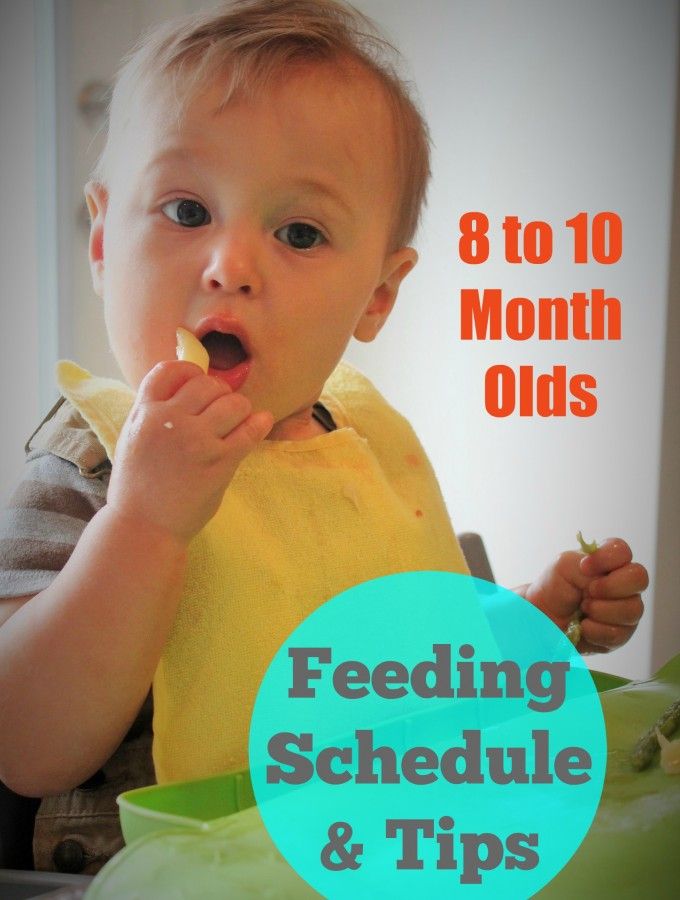 During these regular checkups your baby’s healthcare provider will track your baby’s growth, do a physical exam, ask you how you are doing, answer any of your questions, and schedule or give any immunizations your baby may need. In between these appointments, keep a list of any questions or concerns you have.
During these regular checkups your baby’s healthcare provider will track your baby’s growth, do a physical exam, ask you how you are doing, answer any of your questions, and schedule or give any immunizations your baby may need. In between these appointments, keep a list of any questions or concerns you have. Start looking ahead—check out what kinds of things may happen when your baby is 3 months old.
Turning 3 months old is a big day for your little one. Download and print these milestone cards to celebrate and share the news with friends and family.
For even more information, sign up to get our regular emails:
Scheme of the first feeding of a child (table) with artificial and breastfeeding, what can be given to a baby
The need for the introduction of complementary foods in modern mothers has long been beyond doubt. Pediatricians, pediatric nutritionists and other graduates unanimously say that at some point both mother's milk and formula are not enough to satisfy the growing needs of the child's body for useful trace elements and vitamins.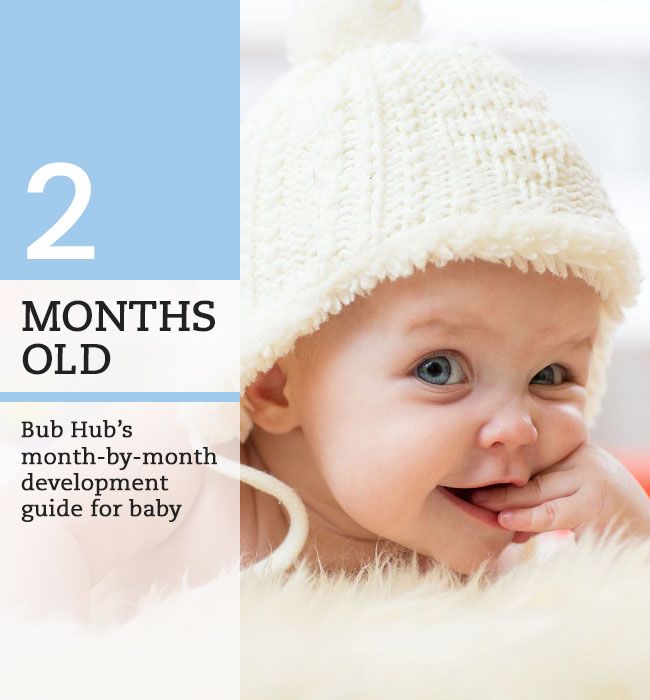 That's when it's time to introduce complementary foods. The fact that your baby is ready to get new experiences and try tastes so far unknown to him is indicated by the presence of the following signs:
That's when it's time to introduce complementary foods. The fact that your baby is ready to get new experiences and try tastes so far unknown to him is indicated by the presence of the following signs:
• doubling the initial weight of the child,
• ability to sit with support,
• child does not push food out of his mouth,
• curiosity and desire to try something from the common table.
Signs of malnutrition in a child, constant feeling of hunger and anxiety associated with it, weight loss can also be important signals for the start of complementary foods. In these cases, it is recommended to immediately contact a specialist and share your observations with him.
Contents: Hide
- When to start the introduction of complementary foods
- with which products to start the completenance of complementary foods
- We avoid errors
- Table of complementary foods for months with artificial feeding
- Table of complementary foods when breastfeeding
- start introducing complementary foods
The timing of the introduction of complementary foods is still debated.
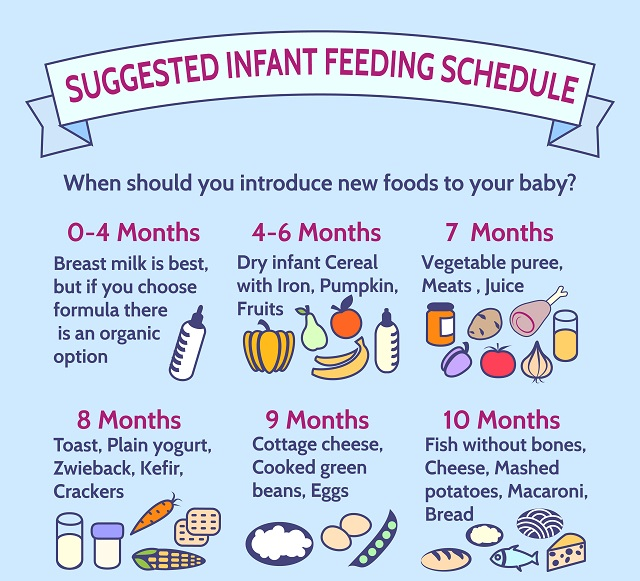 But if we bring scientific reasoning to a common denominator, then the conclusion suggests itself that complementary foods can be introduced from about six months, and for children with certain medical indications - from 3-5 months. Many experts believe that half a year is the ideal time for complementary foods, when the first colic is over, and the digestive system has matured enough to try new foods. The exact answer to the question of when to introduce complementary foods in a particular child can only be given by a pediatrician. In some situations, it may be necessary to introduce new dishes into the baby's diet as early as 4 months, and someone will be ready for this only after six months. nine0007
But if we bring scientific reasoning to a common denominator, then the conclusion suggests itself that complementary foods can be introduced from about six months, and for children with certain medical indications - from 3-5 months. Many experts believe that half a year is the ideal time for complementary foods, when the first colic is over, and the digestive system has matured enough to try new foods. The exact answer to the question of when to introduce complementary foods in a particular child can only be given by a pediatrician. In some situations, it may be necessary to introduce new dishes into the baby's diet as early as 4 months, and someone will be ready for this only after six months. nine0007 What foods should I start introducing complementary foods with
Fruits, vegetables or cereals? Which of these foods are best for starting complementary foods? Experts have long answered this question as follows: if the baby is underweight, suffers from frequent loose stools, it is advisable to start with cereals (of course, gluten-free and dairy-free), and if everything is fine with weight, then vegetables will be the first in line.
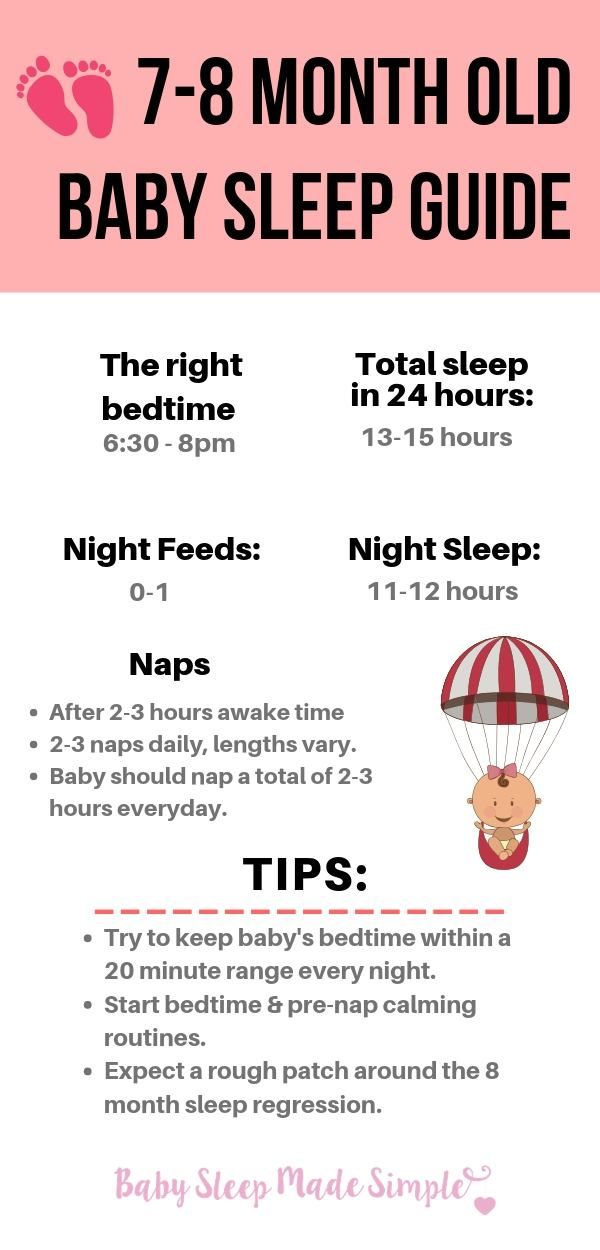 Also, vegetable complementary foods are recommended for breastfed children with constipation problems, rickets, or those born prematurely, whose weight is normal or exceeds the standards. nine0003 Why not fruit? Everything is simple. Fruits have a bright and sweet taste, and after trying an apple or banana first, the baby is likely to refuse zucchini or broccoli, which do not have the same rich taste. Therefore, the introduction of fruit purees and juices into the diet is postponed until vegetable purees become a familiar dish on the menu. As for cereals, buckwheat, rice and corn are first introduced, as they are characterized by the absence of gluten, saturate and are well digested.
Also, vegetable complementary foods are recommended for breastfed children with constipation problems, rickets, or those born prematurely, whose weight is normal or exceeds the standards. nine0003 Why not fruit? Everything is simple. Fruits have a bright and sweet taste, and after trying an apple or banana first, the baby is likely to refuse zucchini or broccoli, which do not have the same rich taste. Therefore, the introduction of fruit purees and juices into the diet is postponed until vegetable purees become a familiar dish on the menu. As for cereals, buckwheat, rice and corn are first introduced, as they are characterized by the absence of gluten, saturate and are well digested. Read also: How to properly teach a child to different tastes
Avoiding mistakes
In order for the introduction of complementary foods not to become a test for either the baby or the mother, you need to follow some recommendations. Most importantly, be patient and don't get too upset if things don't go according to plan.
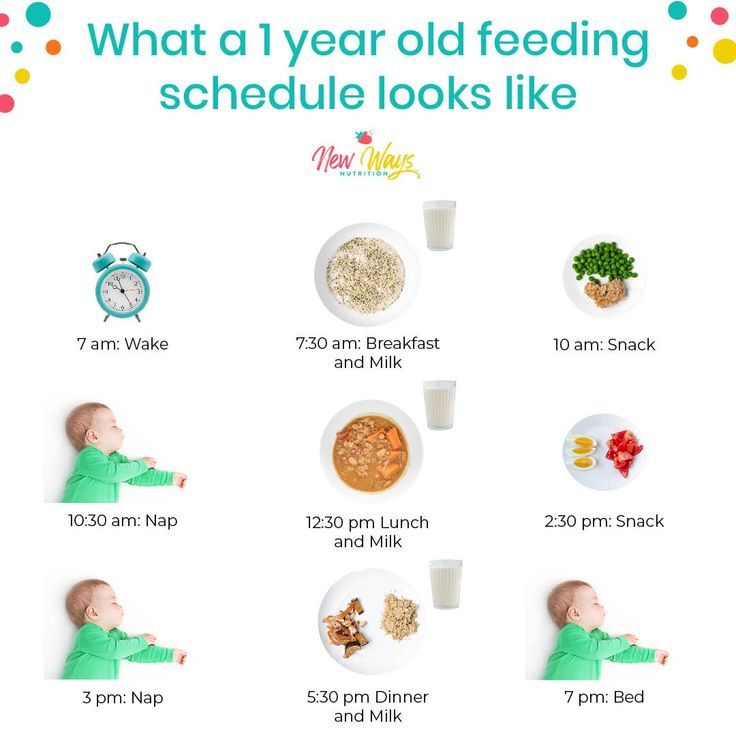 Each child is individual, as are their taste preferences and needs.
Each child is individual, as are their taste preferences and needs.
• Start complementary foods if the baby is perfectly healthy. Contraindications for the introduction of new products will be teething, colds, stress associated with separation or moving, recent or planned vaccinations. nine0003 • New foods are introduced gradually, starting with half a teaspoon. In the absence of allergies or digestive problems, the amount of the product is approximately doubled the next day. Sometimes the introduction of a new product stretches up to a week. Do not rush, give the child the opportunity to "taste" this dish. If the baby flatly refuses the offer, postpone the acquaintance for at least a week.
• Do not force your child to eat. After all, your goal is to introduce your child to new tastes and help develop good eating habits. nine0003 • The best time for the first feeding is after the morning feed until 12 noon, when the baby is already hungry and ready to eat something else. In case something goes wrong, you will know about it during the day, not at night.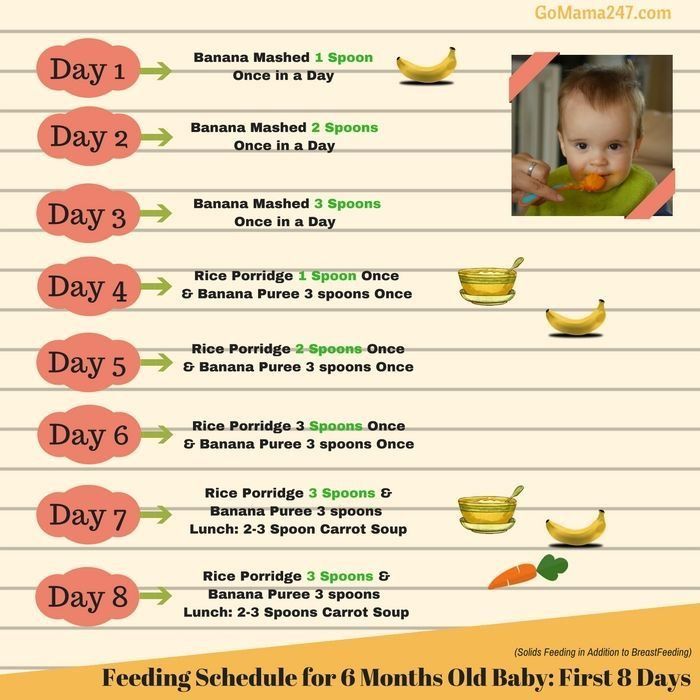
• In the event of an adverse reaction to the product, such as an allergy, seek medical advice immediately. Then, in agreement with the doctor, offer this dish after a certain period of time.
• Gradually increase the amount recommended by your pediatrician. If you don't fit within a week, don't worry. Listen to your child and act accordingly. nine0003 • Always start feeding with complementary foods. Only then offer breast milk or formula.
• Stick to a 5-meal schedule. Feed your baby at the same time every day.
• Food offered to the baby must be thermally processed - boiled or steamed. The dish should be at a comfortable temperature - about 37 ° C.
• Purees and cereals should be of a liquid consistency so that a child who does not yet know how to chew can comfortably eat them. Thicker dishes with lumps and pieces are introduced into the diet by about a year, when there are already several teeth. nine0003 • Do not use salt, sugar or spices when preparing complementary foods. Also, do not add them in order to force the child to eat something. Let the baby get used to natural tastes.
Also, do not add them in order to force the child to eat something. Let the baby get used to natural tastes.
• Complementary foods are prepared at one time and should never be refrigerated until the next meal. Everything should be only the first freshness.
• If you prefer ready-made baby food, carefully study the top manufacturers, pay special attention to the shelf life when buying. nine0007When introducing complementary foods, be guided by the data in the tables, which indicate which products, in what quantity and in what months experts recommend giving. 6 months
7 months
8 months
9 months
10 months
11 months
12 months
vegetables
150 g
170 g
180 g
180 g
180 g
200 g
200 g
Porridge
50–100 g
150 g
068
180 g
180 g
180 g
200 g
200 g
fruit
60 g
70 g
80 g
100 g
100 g
100 g
meat
50 g
60 g
60 g 9000
70 g
70 g
70 g
Cottage cheese
9000
068
10-30 g
30 g
40 g
50 g
50 g
Zhelki
1/4
1/4
1/2
1/2
1/2
Fish
9000
30 g
50 g
60 g
Vegetable
1 ml
3-5 ml
5 ml
5 ml
5 ml
9 Sl.
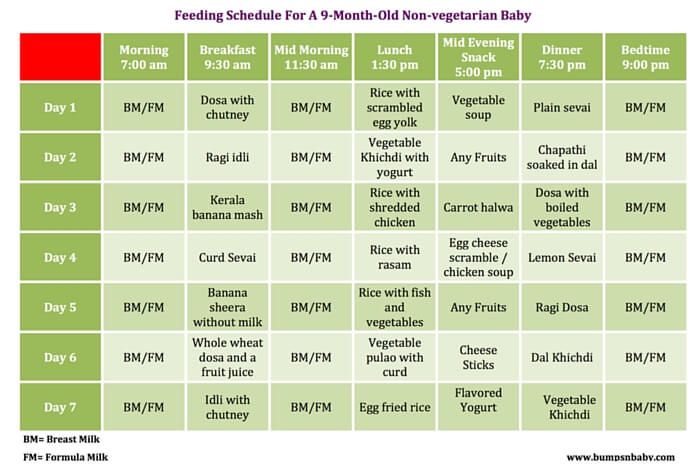
1 ml
3-5 ml
5 ml
5 ml
9006 8 months
9 months
10 months
11 months
12 months nine0012
Silent porridge
10–150 g
150–180 g
150–180 g
180–200 g 9000 g 9000 g 9000 g 9000 g 9000 g 9000 g 9000 g 9000 g 9000 g 9000 g
068
200 g
200 g
200 g
Vegetables
10–120 g
80–120 g
9000 9000 9000 9000 9000 9000 9000 9000 9000073
150 g
170 g
180 g
200 g
200 g
Military0007
-
-
-
-
-
-
160–200 ml
Fruits
5–60 g
50-60 g
60 g 9000 g 9000 g 900–100 g 900-100 G0007
100–120 g
100–120 g
100–120 g
meat
-
10-30 g
30–70 g
60–70 g
60–70 g
9000 9000
9007 9007 9007 9007 900EA0119 Cottage cheese -
-
5–10 g
40 g
40 g
50 g
yolk
-
-
½
½
½
½ --1
fish
-
-
-
10–40 g
10–40 g
50–60 g
9 vegetable oil
-
-
1 ml
3-5 ml
5 ml
5 ml
5 ml
Cream oil
-
-
1-3 g
3-4 g
5 g
5 g
5 g
, as you can see, the schemes for the introduction of pectoral and artificial feeding are not too much.
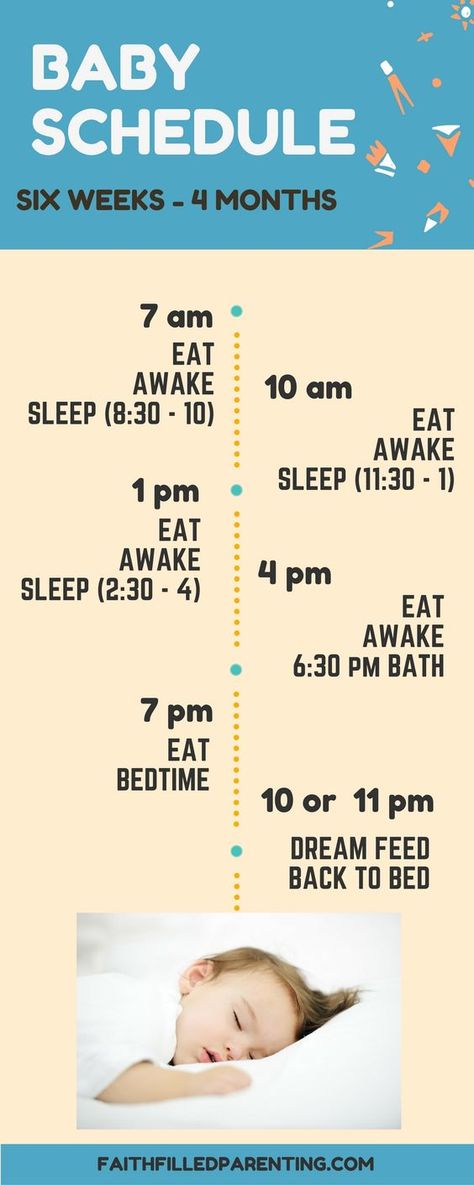 In any case, starting to introduce new foods into the baby's diet, you will have to give the baby milk or formula for a long time, which are still the basis of his nutrition. nine0007
In any case, starting to introduce new foods into the baby's diet, you will have to give the baby milk or formula for a long time, which are still the basis of his nutrition. nine0007 How to introduce solid foods by month
3 months
If your doctor advises your breastfeeding or formula-fed baby to introduce complementary foods at 3 months, start with what the specialist has recommended to you. If these are vegetables, start with the classic - zucchini puree. This vegetable contains many beneficial nutrients and fiber. Start with half a teaspoon, carefully observing the reaction of the child's body. Be sure to supplement your baby with breast milk or formula afterwards. In case the child does not like the zucchini, try giving broccoli or cauliflower. Well, if the doctor advised porridge, feel free to choose buckwheat or corn. nine0003 4-5 months
After your baby has tasted zucchini, broccoli and cauliflower, it's time to add other vegetables: carrots, potatoes, green peas. Do not overdo it with carrots, give it no more than 2 times a week. It is even better if this root crop is combined with other vegetables. It's porridge time! Gluten-free, water-cooked buckwheat, rice or corn. If the baby refuses to eat such cereals, add some breast milk or the usual mixture to them.
Do not overdo it with carrots, give it no more than 2 times a week. It is even better if this root crop is combined with other vegetables. It's porridge time! Gluten-free, water-cooked buckwheat, rice or corn. If the baby refuses to eat such cereals, add some breast milk or the usual mixture to them.
6 months
Time to pamper your baby with dried fruit compote, and formula-fed children start giving milk porridge. You can use a milk mixture to prepare such cereals, and in some cases, milk diluted with water. But in general, pediatricians do not advise introducing cow's milk into a child's diet before 8 months, as this can cause allergic reactions.
7 months
After the baby gets used to vegetable purees, you can try to give fruit purees and, if desired, juices, which should be diluted with water. There has been a lot of negative talk about juice lately. There is no fiber in them, but there are a lot of acids, which may not be completely safe for the stomach and have a high sugar content. So consult a pediatrician and think carefully about whether to give the baby juices or still prefer mashed potatoes and compotes. An excellent alternative to juices is children's herbal teas. Start introducing your baby to fruits with apples (preferably green varieties), bananas, and pears. The baby's menu is replenished with a new product - meat. Rabbit meat, turkey meat are best suited. Chicken and veal are also considered a good option. Low-fat pulp without streaks is taken. It is boiled or brought to readiness for a couple, then crushed in a blender or meat grinder. Meat with a gradual increase in its quantity is given as part of vegetable purees. Also at 7 months, it's time to give the baby a pumpkin. nine0003 8 months
So consult a pediatrician and think carefully about whether to give the baby juices or still prefer mashed potatoes and compotes. An excellent alternative to juices is children's herbal teas. Start introducing your baby to fruits with apples (preferably green varieties), bananas, and pears. The baby's menu is replenished with a new product - meat. Rabbit meat, turkey meat are best suited. Chicken and veal are also considered a good option. Low-fat pulp without streaks is taken. It is boiled or brought to readiness for a couple, then crushed in a blender or meat grinder. Meat with a gradual increase in its quantity is given as part of vegetable purees. Also at 7 months, it's time to give the baby a pumpkin. nine0003 8 months
An important moment in the introduction of complementary foods during artificial and breastfeeding occurs exactly at 8 months. It's time to give the baby a yolk. Watch the reaction of the body very carefully: if there are any manifestations of allergies.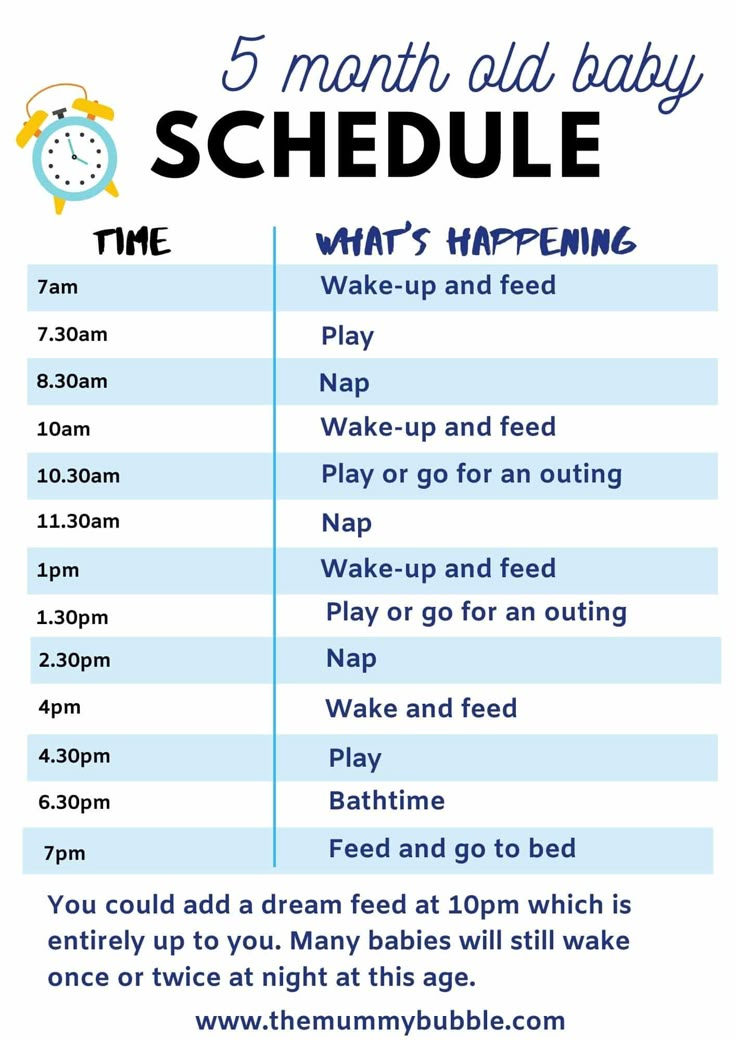 In case of a negative reaction of the body to chicken yolk, exclude it from the menu and try quail. It is best to give this product in the morning feeding from 9 to 11 hours. Along with vegetable and butter, gluten cereals are also introduced: oatmeal, millet, barley, pearl barley. It's time to give your child a taste of light vegetable soups. The components of the dish should be familiar to the child. Do not experiment by introducing dishes into the diet even with one unknown ingredient. Meatballs, boiled or steamed, are added to the meat in the form of mashed potatoes. nine0003 9 months
In case of a negative reaction of the body to chicken yolk, exclude it from the menu and try quail. It is best to give this product in the morning feeding from 9 to 11 hours. Along with vegetable and butter, gluten cereals are also introduced: oatmeal, millet, barley, pearl barley. It's time to give your child a taste of light vegetable soups. The components of the dish should be familiar to the child. Do not experiment by introducing dishes into the diet even with one unknown ingredient. Meatballs, boiled or steamed, are added to the meat in the form of mashed potatoes. nine0003 9 months
At this age, the baby should be introduced to the diet of low-fat fish: pollock, hake, perch, cod. For these purposes, fillets are taken and steamed, stewed or boiled. For the first time, fish are given in very small quantities. Start with once a week, gradually increasing to two. Remember that either fish or meat is given on the same day, without mixing these 2 products. If at the age of 8 months there were no prunes on the menu of the child, it's time to fix it. Dried fruit compote is also an excellent option, which at first is best diluted with water. However, you definitely shouldn’t get carried away with dried apricots, it’s better to wait until the baby reaches the age of one. nine0003 Months 10–12
Dried fruit compote is also an excellent option, which at first is best diluted with water. However, you definitely shouldn’t get carried away with dried apricots, it’s better to wait until the baby reaches the age of one. nine0003 Months 10–12
The diet characteristic of this period is characterized by an increase in portions to their maximum values indicated in the scheme. Also, it is at this age that the last feeding is gradually replaced by milk or kefir.Now that you've come across a set of essential tips, you're ready to start weaning. Once again, consult with a specialist, be patient, not forgetting to listen to the baby's body. We are confident that you will succeed. The main thing here, as in any other business, is a positive attitude. It all depends on you and your desire to raise a healthy and happy baby with competent eating behavior. Don't stop if you fail and don't get frustrated if things don't go according to plan. Everything will definitely work out.
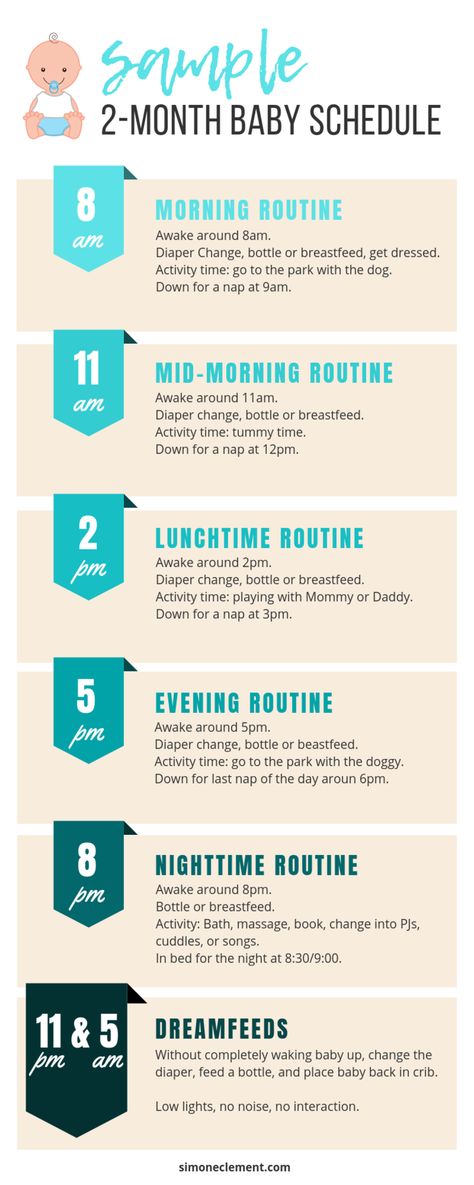 nine0007
nine0007 #Nutrition for children under one year of age #Complementary foods
WHO recommendations for the introduction of complementary foods
08.08.2019
Readiness of the child to complementary foods According to the WHO recommendation, existing for 2018, it is optimal to introduce complementary foods to an infant at 6-8 months. Until six months, the baby's gastrointestinal tract is still not sufficiently formed, all the necessary enzymes are not produced for the assimilation of food other than mother's milk or formula. And by 9-10 months, the child can already form stable stereotypes of eating only liquid food, and overcoming them will be painful and difficult for the baby. nine0007
Thus, WHO defines the following signs of a child's readiness for the introduction of complementary foods: the maturity of the digestive system; extinction of the solid food ejection reflex; the appearance of the first teeth, making it possible to chew; the readiness of the baby to be stable in an upright position; emotional readiness for new tastes and sensations.

Complementary feeding system WHO has developed recommendations for three complementary feeding options: cereals, vegetables, and meat.
Fruit complementary foods are not recommended for cereals and vegetables. This is due to the fact that up to 8-9 months the gastrointestinal tract of the baby is not ready for the absorption of raw fruits and fruit juices. It is vegetables and cereals that will populate the intestines with the necessary bacteria for the absorption of fruits.
Kefir, according to the WHO, is not considered complementary foods because it is not a solid food. The WHO complementary feeding scheme includes kefir only as an additional food from 8 months. The introduction of cow's milk is recommended by WHO only from 12 months. nine0007
Any complementary feeding scheme assumes that portions of complementary foods will systematically increase from half a teaspoon to 100-200 g. The first dishes for complementary foods are prepared exclusively with one-component.
 Each next component is introduced only after complete addiction to the previous one (6-7 days).
Each next component is introduced only after complete addiction to the previous one (6-7 days). Product sequence
The following sequence of introduction of complementary foods is proposed.
- Vegetables at 6 months. nine0016
- Porridges on the water (oatmeal, buckwheat, corn) at 6.5 - 7 months.
- Fruit puree, yolk at 8 months.
- Milk porridge at 8-9 months.
- Meat puree at 9 months.
- Meat by-products at 9-10 months.
- Kefir, cottage cheese, yogurt at 9-10 months.
- Fish at 10 months.
- Juice at 10-12 months.
- Berry puree at 12 months. nine0016
- Meat broths at 12 months.
The introduction of vegetable oil (olive, sunflower) in puree and porridge is allowed from 6 months: a scheme with 1 drop with a gradual increase to a volume of 1 teaspoon. The introduction of butter begins at 7 months: the scheme is from 1 g to 10 g in porridge.
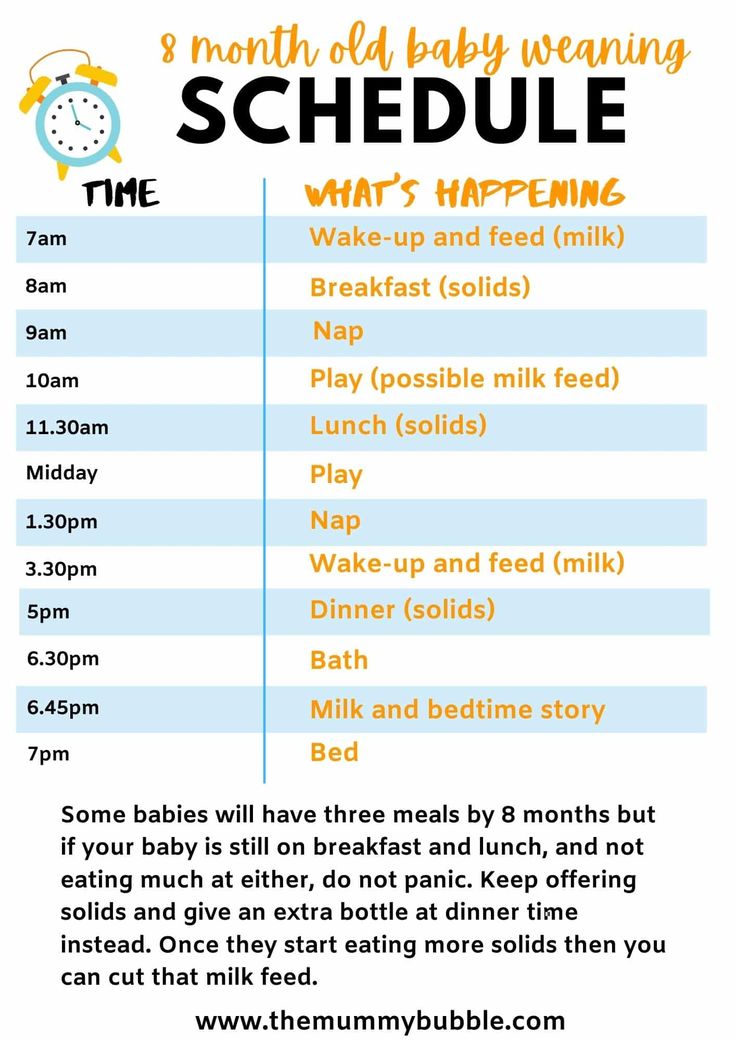
For formula-fed babies, the first feeding schedule is similar, with a few exceptions. For these babies, it is better to introduce complementary foods from 5 months, because the milk mixture does not give the small body all the “building material”. The introduction of complementary foods differs only in terms: vegetable purees and cereals are introduced a month earlier. nine0007
First cereals
If the child's weight is significantly less than normal, WHO recommends starting complementary foods with non-dairy cereals. For babies, cereals are prepared only with non-dairy, unsalted, semi-liquid, absolutely homogeneous in consistency. The first cereals are prepared from cereal flour (the sorted and washed cereals are carefully ground and crushed).
The following sequence of introduction of cereals is proposed: buckwheat, rice, corn, oatmeal, semolina. It is recommended to cook semolina porridge only once a week, because it contains practically no nutrients, but it is rich in gluten, which can cause problems in the intestines.
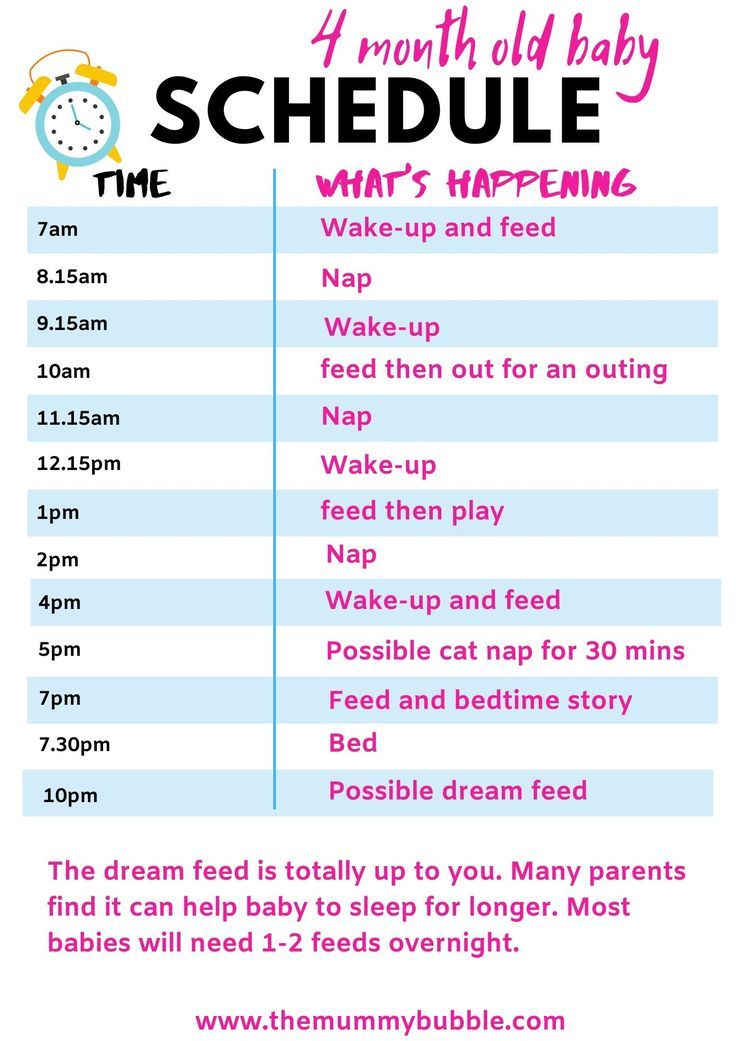 Proportion for the preparation of the first porridge: 5 g of cereal flour per 100 ml of water. After slightly cooling the finished porridge, chop again. In the finished porridge, you can add 1-2 drops of vegetable oil or a little expressed breast milk. nine0007
Proportion for the preparation of the first porridge: 5 g of cereal flour per 100 ml of water. After slightly cooling the finished porridge, chop again. In the finished porridge, you can add 1-2 drops of vegetable oil or a little expressed breast milk. nine0007 From 9 months, the baby's nutrition system involves multicomponent cereals, from products already well known to the child. You can already add vegetables and fruits familiar to the baby to cereals. At 9 months, it is allowed to cook barley and millet porridge for babies. And by 10-11 months, cereals on the water will be a great addition to meat and fish meatballs and steam cutlets.
Vegetable food
The first purees are made from one vegetable.
The sequence of introducing vegetables into complementary foods for babies suggests the following order: zucchini, cauliflower, pumpkin, potatoes, carrots, green peas, beets. These vegetables are introduced within 6-9baby months. After 1 year, you can give your child cucumbers, eggplants, tomatoes, sweet peppers, white cabbage.
 After preparing the puree, make sure that the mass is completely homogeneous, there are no fibers and small particles, the consistency is semi-liquid. Don't salt. Add 1-2 drops of vegetable oil or expressed milk.
After preparing the puree, make sure that the mass is completely homogeneous, there are no fibers and small particles, the consistency is semi-liquid. Don't salt. Add 1-2 drops of vegetable oil or expressed milk. If the child refuses vegetable complementary foods, cancel this product for 1-2 weeks. Try to temporarily replace it with another and return to it after a while.
Meat supplements
From 9 months old, the first meat purees are recommended for babies. The first courses are recommended to be prepared from lean meats: rabbit; quail; turkey; chicken.
Complementary foods for a 6-month-old baby are recommended to be introduced in the morning. This will allow you to track the child's reaction to an unfamiliar product before a night's sleep: is there a rash, intestinal disorders, anxiety in the baby, profuse regurgitation. It is better to give vegetables or porridge first, and then saturate with breast milk or formula. Gradually, porridge and a vegetable dish will replace one full meal.
